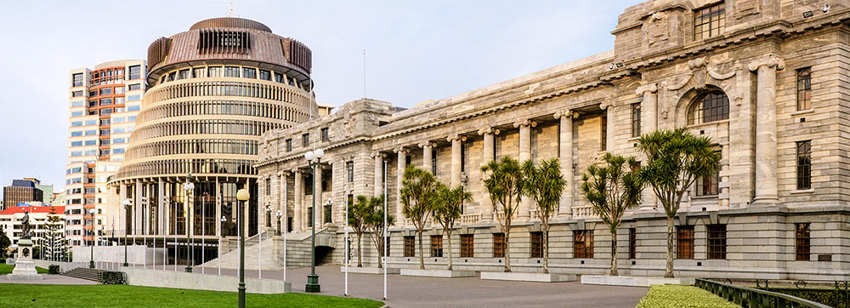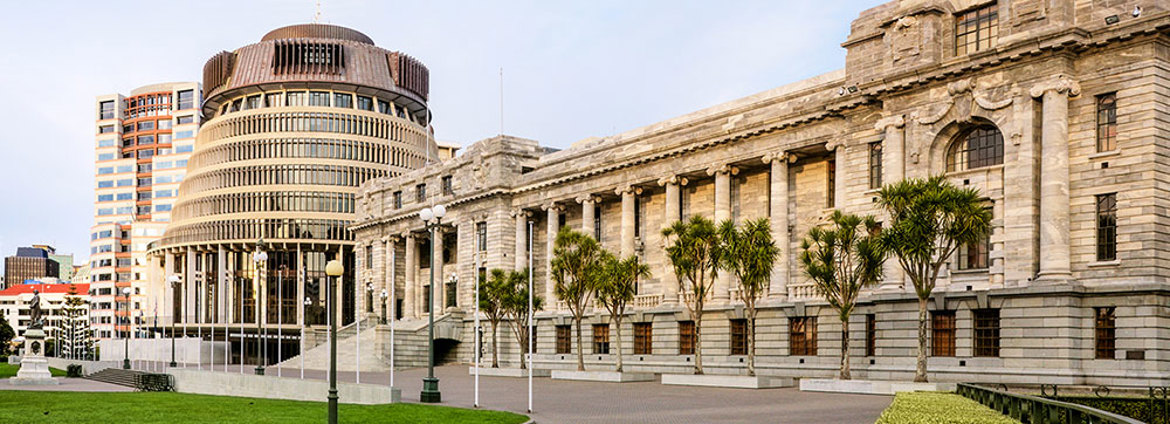The High Court has released its much anticipated decision regarding Andrew Borrowdale’s challenge of the legality of the lockdown imposed on the New Zealand public on 26 March in response to the COVID-19 pandemic.
In summary, the Court found that, contrary to Mr Borrowdale’s submissions:
- The Director-General of Health had the power under the Health Act 1956 to impose a nationwide lockdown
- All of the orders issued by the Director-General under the Health Act were valid.
The Court also dismissed Mr Borrowdale’s claim that there was an unlawful delegation from the Director-General to the Ministry of Business, Innovation, and Employment (MBIE) in relation to decisions about what qualifies as an ‘essential business’.
However, the Court agreed with Mr Borrowdale’s claim that the requirement to isolate at home during the first nine days of lockdown did not have a legal basis. While the Court determined that the Director-General did in fact have the power to impose a full Alert Level 4 lockdown from 26 March, it found that this power was not exercised correctly until 3 April 2020.
Below we set out the Court’s reasoning, and the implications of the judgment.
The key orders giving effect to the lockdown
The judicial review concerned the lawfulness of the following Health Act orders:
- Order 1: issued on 25 March 2020, which required all non-essential premises to be closed and forbade people from congregating in outdoor places of amusement or recreation
- Order 2: issued on 3 April 2020, which fully implemented Alert Level 4 and the requirement that all New Zealanders remain isolated at home except for essential personal movement, and maintain physical distancing
- Order 3: issued on 24 April 2020, Order 3 was similar to Orders 1 and 2, but with further detail.
First cause of action: Were the first nine days of the lockdown legal?
Mr Borrowdale’s first cause of action related to the first nine days of the lockdown that began on 26 March 2020. He submitted that public announcements made by the Prime Minister and other government officials at various press conferences and media interviews directed New Zealanders to confine themselves to their homes and to stop all interactions with others outside their household bubble.
The Court referred to numerous statements made by the Prime Minister and others from 23 March that stressed New Zealanders needed to stay at home and stop all interaction with others outside their household. The Court noted that this message was later backed up by promises of enforcement. For example, on 26 March, the Commissioner of Police warned that if people refused to comply with the “requirement to stay home”, the police would “take them to our place, and put them somewhere that will allow them to contemplate the impact of their decisions”. It was also said that serious and prolific breaches would be prosecuted.
Mr Borrowdale alleged that these directions went beyond the restrictions set by Order 1, and therefore were not prescribed by law. It was not until Order 2 was issued on 3 April that the Alert Level 4 requirement to isolate at home in a bubble had a legal basis. As such, it was submitted that the restricted measures that the Government (through Order 1) directed New Zealanders to follow:
- Unlawfully limited rights affirmed by the New Zealand Bill of Rights Act 1990 (NZBORA), such as the right to freedom of movement
- Constituted the unlawful suspending of law or execution of law under the Bill of Rights 1688.
The Crown responded that the statements made by Government officials in the early days of lockdown were guidance rather than commands and, in any event, the limitation of rights was in accordance with the statutory powers under the Health Act and the Civil Defence Emergency Management Act 2002.
The Court accepted that the public health regime operates primarily through education and community engagement. However, it pointed out that there was a dichotomy between the importance of encouraging voluntary compliance, and the threatened use of coercive powers. In light of the use of imperative language such as ‘must’, backed up by references to the possibility of enforcement action for those who did not follow the ‘rules’, the Court determined that the statements were commands that conveyed to New Zealanders that there was a legal obligation to comply, not simply guidance encouraging them to do so.
The Crown proposed alternative sources for the legal basis of the restrictive measures, including that the Director-General was exercising his power under section 70(1)(f) of the Health Act to require people to quarantine. The Court rejected this argument, finding that while Dr Bloomfield did have that power, there is no evidence he exercised it before issuing Order 2. Also, it is only the Director-General who has the power under the Health Act to impose lockdown. Statements made by the Prime Minister, the Commissioner of Police, and other Government officials directing New Zealanders to abide by Alert Level 4 restrictions were not prescribed by law and therefore unlawfully limited the affirmed rights and freedoms of NZBORA.
Interestingly, the Court qualified its conclusion by stating:
“It is important, however, to keep our conclusion in perspective. The situation lasted for nine days. And it occurred when New Zealand was in a state of a national emergency fighting a global pandemic.”
The Court also made an effort to note that it did not consider the Government’s statements were deliberately misleading. In the Court’s view, the various makers of statements may have believed they were only giving guidance or, more likely, they were simply mistaken about either the ambit of Order 1 or the extent of the available enforcement powers.
As Dr Bloomfield stated in his affidavit:
“The absolute priority was to get the lockdown in place and that drove every aspect of what we did over that period: we needed to move, and had no time to sort out the exact details. Some things would have to get sorted out later.”
In relation to the second part of Mr Borrowdale’s first cause of action, the Court rejected that the Government officials’ directions constituted a suspension of laws or their execution in terms of the Bill of Rights 1688. The statements made by Government officials were not purporting to suspend a law that could only be changed by Parliament. The ‘Executive’ (through the Director-General) always had the power to impose a full lockdown under section 70(1)(f) of the Health Act, but omitted to exercise that powers for the first nine days of the lockdown.
Second cause of action: Was there a power to put all of New Zealand into lockdown?
Mr Borrowdale claimed that the Director-General exceeded his powers under sections 70(1)(f) and (m) of the Health Act by, in effect, putting all of New Zealand into lockdown. His arguments largely concerned the technical drafting of the legislation, including (among other arguments) that:
- The power to require quarantine and isolation under section 70(1)(f) related only to individuals, rather than to the population as a whole
- The power under s 70(1)(m) to close premises of “any stated kind or description” does not permit all premises to be closed, subject only to specified exceptions.
Mr Borrowdale submitted that, as the powers conferred by sections 70(1)(f) and (m) engaged rights affirmed by NZBORA (such as the right to freedom of movement), those sections should be interpreted narrowly by the Court.
The Court considered that determining whether Orders 1, 2, and 3 went beyond the limits of sections 70(1)(f) and (m) required it to construe the provisions based on their text, in light of their purpose and statutory context, and on the basis that they are to be applied to circumstances as they arise.
In making this assessment, the Court noted that:
- The powers conferred by section 70 can only be used in a public health emergency
- There are in-built limits, such as that the powers can only be exercised to prevent the outbreak or spread of infectious disease
- The powers have an indirect temporal limit.
Ordinarily powers that restrict NZBORA rights and freedoms would dictate a narrower, more literal approach to the text. However, the Court found that the matters listed above instead require a fair, liberal, and remedial construction of the drafting to better recognise that the powers are exercisable only in an emergency that justifies restrictions on individual rights.
It was on this basis that the Court rejected each of Mr Borrowdale’s arguments regarding the text of sections 70(1)(f) and (m) and ultimately concluded that Orders 1, 2, and 3 were authorised by law.
Third cause of action: Were decisions relating to essential businesses correctly made?
Order 1 required non-essential premises to be closed. ‘Essential businesses’ were defined as:
“…businesses that are essential to the provision of the necessities of life and those businesses that support them, as described on the Essential Services list on the covid19.govt.nz internet site maintained by the New Zealand government.”
Mr Borrowdale alleged that there was an unlawful delegation of the Director-General’s power to determine what was an “essential business” to MBIE.
Dr Bloomfield submitted that he delegated his power to close premises of a stated kind or description to MBIE, who administered the scheme.
The Crown took a different view, noting that there were sound policy reasons for why powers contained in section 70 should only be exercised by a medical officer of health (of which the Director-General is one). The Crown therefore accepted that a delegation from Dr Bloomfield to MBIE would be unlawful. However, it contended that the Director-General defined essential businesses as those businesses essential to the provision of the necessities of life (and those businesses that support them). MBIE then interpreted and applied that definition by reference to specific businesses.
The Court agreed with the Crown and found that the reference to the COVID-19 website should not be regarded as forming part of the core definition and was advisory. As such, a business not listed on the website could still meet the definition of an essential business. While the Court accepted that the use of ‘as described’ was not a model of great drafting, it bore in mind that Order 3 was prepared in a situation of great urgency, in the eye of a global pandemic, when the crisis was escalating rapidly.
The Court also considered it was necessary and lawful for the operational assessment of which businesses were ‘essential’ to be left with the lead agencies operating in the relevant sectors as opposed to the Director-General.
The Law Society raised concern that the definition’s generality sat uncomfortably with the rule of law’s requirement for reasonable certainty. However, the Court considered that the definition was capable of being given an ascertainable and reasonable meaning.
It is this aspect of the Court’s decision that is predicted to invite the most scrutiny. Business owners may say that, when considering whether they were a non-essential business and required to shut down, it is unlikely that they would have arrived at the Court’s nuanced conclusion that, despite not being on the list of essential services on the COVID-19 website, they were nonetheless an essential business as defined in the Health Act order.
The Court’s view is that, if a business had to question whether or not it fell within the definition of essential business, then it probably was excluded from the definition. However, businesses may say that they simply would not have questioned whether they met the definition if they were not listed on the COVID-19 website.
The result: A declaration by the Court
In deciding whether to make a declaration that the first nine days of lockdown were unlawful, the Court placed considerable weight on the rule of law, which requires that the law is accessible and as clear and predictable as possible. While the Court found the Government’s actions were reasonable, necessary, and proportionate, the first nine days of lockdown lacked the required clarity. The Court therefore declared the requirement communicated by the Executive for New Zealanders to stay home in their bubbles on 26 March was not prescribed by law and was therefore contrary to section 5 of NZBORA.
What now?
Some media commentary has focused on the Court’s finding that aspects of the first nine days of lockdown were unlawful. However, we think that the key takeaways from the Court’s decision are that there was in fact a power to impose the full Alert Level 4 lockdown, and that it was a failure to properly exercise that power in the first nine days that resulted in the declaration relating to Order 1.
It remains to be seen what the implications will be of the Court’s declaration. Order 1 has been revoked for some time, and there is now new legislation that gives the Government and health officials the power to make orders as necessary to respond to the COVID-19 pandemic (the COVID-19 Public Health Response Act 2020, discussed in our update here).
The Court’s decision will be relevant for anyone who may have been fined or arrested for breaching the lockdown, although media reports indicate that few (if any) prosecutions will be affected. The Attorney-General has already stated that he foresees no consequences resulting from the Court’s decision, and that there are no plans to pass retrospective legislation validating the first nine days of the lockdown.
This article was written by Natasha Wilson (special counsel), Rebecca Dudley-Cobb (senior solicitor) and Emily Tyler (solicitor).








